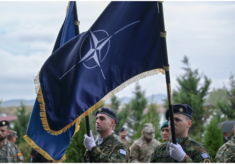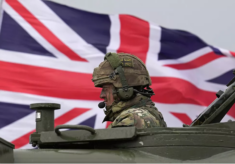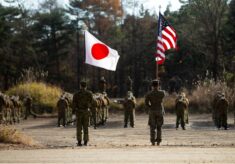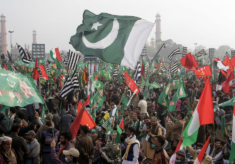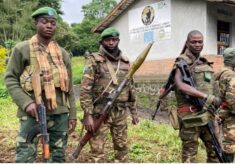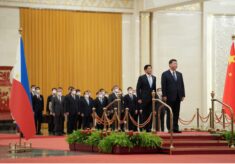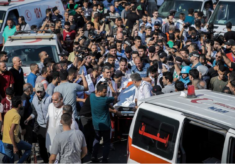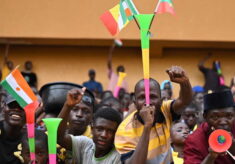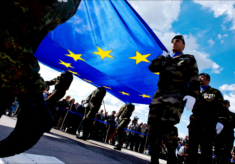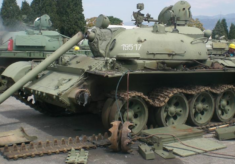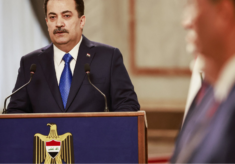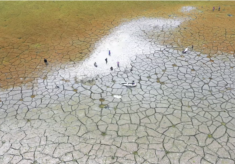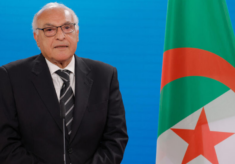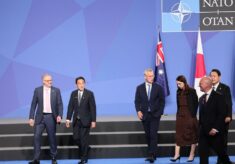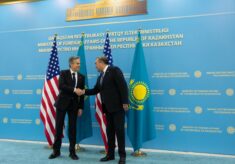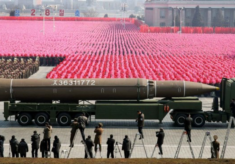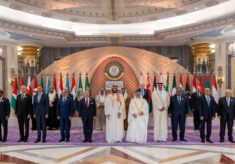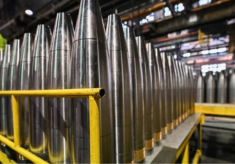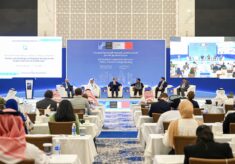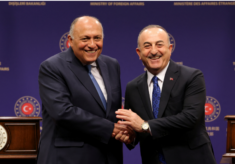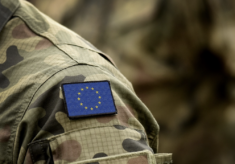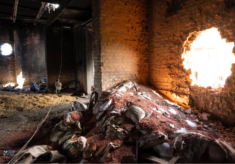From the assassination that set World War II to the wars sweeping former Yugoslavia in the 1990s, the Western Balkans have been the crucible of 20th century, the place where ethnic cleansing and killings were first practiced as a tool of policy.
“The future of Western Balkans is in the West”. Mike Pence’s recent statement released in Montenegro didn’t leave any doubt. But we could wonder: is it for real or just wishful thinking? Going back through recent history, the same Montenegro is a good paradigm. King Petrovic-Njegos had four daughters: the first was married to Karageorgevic in Serbia; the second to Romanoff in Russia; the third to Savoia in Italy; and the fourth was sent to the convent due to a lack of princes in the neighborhood. Similarly instructive is the Kalemegdan hill in Belgrade, at the juncture between Danube and Sava rivers. This is where archeology teaches us that the bottom layer reveals ancient Roman ruins, on top of which are Byzantine layers, followed by Ottoman, Austrian-Hungarian, Ottoman again, then Austrian once more. Meaning that the area was disputed for centuries; and while approaching the Adriatic coasts, you definitely taste a Venetian flavor. Historically, the Balkans have been a crossroad between north, south, east, and west. Under Tito’s rule, Western Balkans were, so to speak, a “nobody’s land”, or more correctly a non-aligned country.
Russia has traditionally been an important actor in the region, basing its influence on cultural-historical affinity with local Orthodox Slavs. The end of the Cold War, however, has witnessed a precipitous decline in Russian influence, due to the weakness of the new State on economic, political, and military grounds. As the new Russia was looking for a legitimization with the West, a consolidation of its place within the international community, and a recognition to be a player in the area, the new leadership joined the Western management of the Yugoslav crisis throughout the years and maintained a cooperative attitude. With two exceptions: it abstained on UNSC resolution on NATO intervention under Chapter VII in Bosnia (1995) – the first NATO out-of-area military operation – and it put a veto on NATO action against Milosevic in Kosovo (1999). A compromise emerged within G8 with an ambiguous formula, later registered in Resolution 1244, which avoided mentioning the independence of the region. However, the dispatch of 300 Russian troops to Pristina airport, before NATO’s arrival, signaled strong Russian sensitivity vis-à-vis both NATO and the Kosovo/Serbia issue.
The subsequent Russian Foreign Policy Concepts adopted in February 2013 and November 2016 brought about the Russian view in the international arena: in 2013, a civilizational dimension was introduced, according to which “…various values and models of development based on the universal principles of democracy start to clash and compete against each others…”; in 2016, the concept was further developed by explicitly stating that “major powers face increased risks of being drawn into regional conflicts and escalating crises, triggered by the geopolitical expansion pursued by NATO and the EU”. Most recently, the Putin address on the state of the nation on the 1st of March was far from being reassuring for the western audience. The overall Russian approach is well summarized in 2005 Putin’s statement that “the collapse of the Soviet Union has been the greatest geopolitical catastrophe of the 20th century”. A sentence reflecting at the same time nostalgia of the past and a program for the future.
Going back to the Yugoslav crisis, a sort of division of labor has been prevailing within the Western community: while the NATO strategy was largely a US strategy, Europe engaged in a vast effort on the civilian side to promote stabilization and democratic reforms. Brussels mobilized all available tools on political, diplomatic, economic, and financial grounds in addition to people-to-people exchanges. The Western Balkans denomination turned to be South-East Europe. As a crucial incentive, the perspective of gradual integration of the newly independent states into the European Union was launched. Since 1999 a Stability Pact for South-East Europe was organized, and in 2003 the Thessaloniki Summit formalized the integration goal at the end of the democratization process. On the same track, Italy revitalized and updated the 1989 Centre-European Initiative, in 2000 promoted the Adriatic Initiative, and never stopped to underline the merits of the integration project. However, in the following decade the process slowed down as the European Union entered a phase of “Balkan fatigue” when faced with the difficulty of the Balkan countries to speed up democratic standards and to overcome residual problems inherited by the war, as well as with the critical juncture emerging within the same European Union. Accession prospects became more and more distant for most of the Balkan countries. For years, new accessions were frozen. Only in February this year the EU Commission re-launched the project, although with the same degree of conditionality, first of all the normalization of Kosovo/Serbia relations and a consensus formula on FYROM final denomination, in addition to completing reforms. It did so considering both the European vulnerability on security and migration issues and the emerging ambitions of other international protagonists, including China, the Arabs of the Gulf, Turkey.
As for Russia, moving from the assumption of recovering its past “greatness” by building on “traditional values” and “national identity”, it has been trying to reassert its influence in the region, using a mixture of soft-power related to cultural links and of economic leverage in strategic sectors such as energy, where these countries are particularly vulnerable, but also transport, infrastructures, real estate, and banking. While the region is not part of the former soviet space, the Russian approach is meant to at least preserve and consolidate the influence of the past. Russia doesn’t see the EU project of new enlargements as conflicting with its own Eurasian Economic Union initiative. More generally, by Lavrov words, it would wish to replace the logic of “either side with Europe or with Russia” with the idea of “a common economic space between the Atlantic and Pacific Oceans”. This, of course, would imply an overall EU shift to the East that would be instrumental to the Russian wider strategy of fragmenting the transatlantic links. Russia considers NATO expansion to the East, closer and closer to Russian borders, a big “mistake”, besides being a violation of the “gentlemen agreement” of the 1990s (that no party would seek security at the expenses of others), and is acting consequently by way of a full range of tools, from military (Georgia 2008, Donbas/Crimea 2014) to cybernetic attacks. Conflicting East-West narratives of the post-cold war era and divergent philosophies in international relations suggest that today’s confrontational scenario would require a substantial degree of good will and mutual trust to be overcome.
As for the Western Balkan countries, leaving apart those who are already members of EU and/or NATO, we can detect a mixed attitude. Let’s take Serbia or Montenegro, which are mentioned by EU as the firsts on the list of EU candidates to accession. Montenegro is a NATO member since 2016 and at the same time absorbs the highest amount of Russian investments in the region. Serbia has developed a positive relationship with Brussels, being an associated country since 2008, its trade is clearly oriented towards Europe, and large part of foreign investments is European; in parallel, it negotiated a free trade agreement with Russia, didn’t join Europe on sanctions after Crimea annexation, established a military cooperation with Moscow, and it is conducting military exercises with both NATO and CSTO (Russian-led Collective Security Treaty). In so doing, these countries are simply signaling that they are willing to strengthen relations with the West without antagonizing Russia. Not just because Russia was opposing NATO bombardment in the 1990s or because Russian political-economic pressures, but possibly with reference to their cultural-historical background. If it is so, Western Balkans could be a favorable ground for exploring a selective cooperation with Russia. Differently from the 1990s, today we certainly couldn’t expect the United States to take the lead, but Europe should try to draw their attention on the region and act in consultation with them. We can’t even expect an easy.going cooperation with Moscow. However, to make an effort to stabilize the area would be in the interest of both sides, East and West, if nothing else to fight terrorism spreading into the region from the Middle East. Terrorism is a common challenge, and preventing terrorism is a common goal for Europe, Russia, the United States. For sure, King Petrovic-Njegos and King Karageorgevic would welcome such development.
Laura Mirakian – Ambassador
